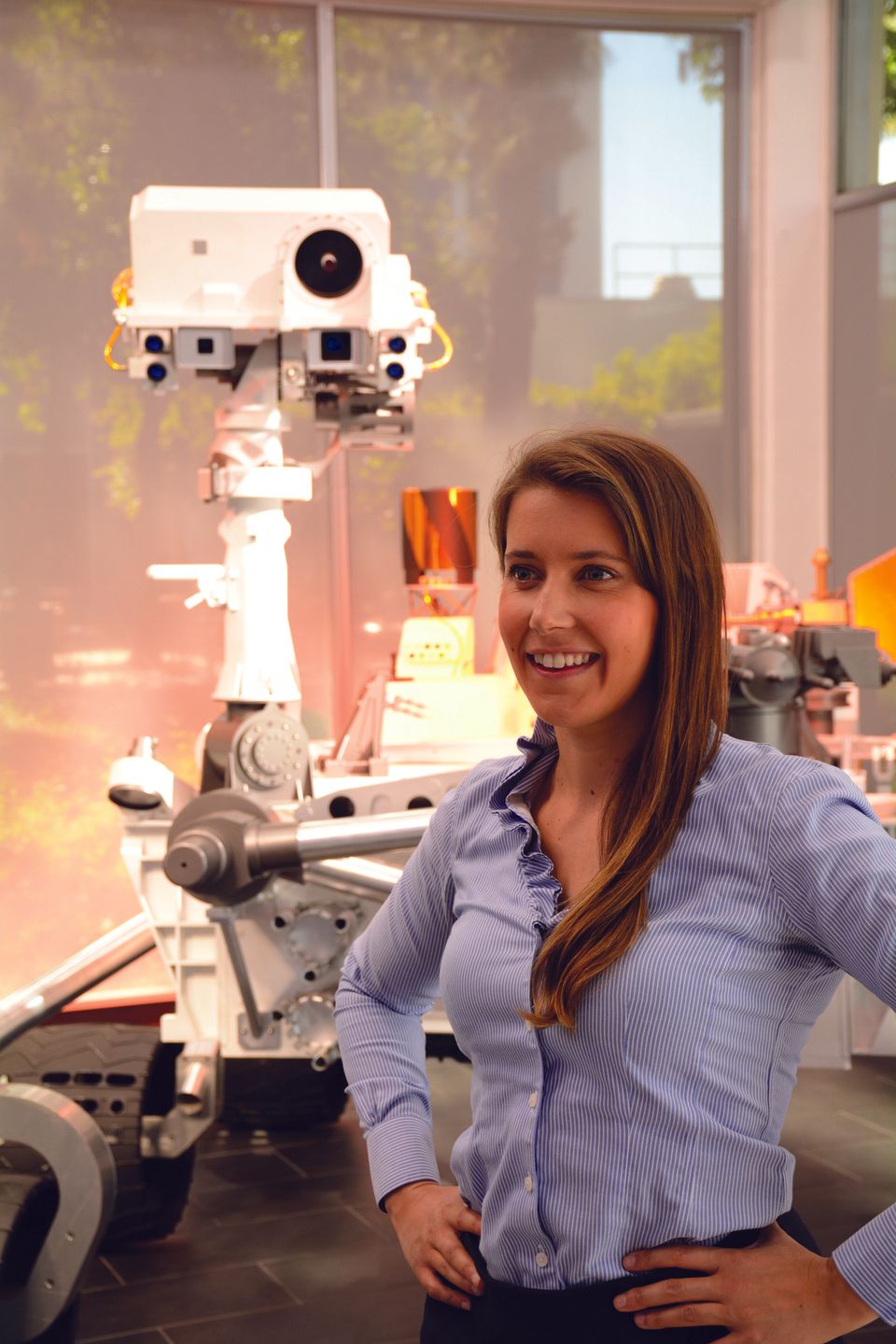Shooting For The Stars
Elizabeth Jens knew from the age of 12 that she wanted to be an astronaut. Now living in the US and working at NASA, she shares her experience, and a newfound sense of optimism of Australia’s growing space industry.
I am a propulsion and systems engineer at the NASA Jet Propulsion Laboratory in California. I share my time between systems engineering for Mars missions and propulsion technology development for small spacecraft. I am currently working on a small cold-gas system that will be used on the Perseverance Rover. This system sits on the rover’s arm and is used to clear dust from the surface of rock samples so that they can be imaged and analysed by the rover’s scientific instruments. I am also a system engineer for the Mars Ascent Vehicle. The Mars Ascent Vehicle is a part of the proposed Mars Sample Return effort, where we hope to bring samples collected by the Perseverance rover back to Earth. The Mars Ascent Vehicle is the rocket that is being designed to launch from the surface of Mars and deliver the samples to Mars orbit.
I have wanted to be an astronaut since I was around ten or twelve years old. A couple of events occurred around this time that set me on my current path. The first was a gift from my dad, a book titled Mission to the Planets by Patrick Moore. The book was filled with gorgeous images of our solar system, descriptions of each of the planets and moons, and discussions of the missions that taught us about them. I loved reading about the various robotic missions and realising how much more there was for us to discover. Around the same time, my family went to hear the Apollo astronaut Charlie Duke speak. Listening to him talk, in front of images of him standing on the moon, made me realise that as incredibly talented as astronauts are, they are also human. I left that talk wanting to be an astronaut and just kept thinking: “Why not me? If I work hard and stay healthy, why could I not be that person standing on the moon one day?” The combination of the book and the talk made me realise that I love learning and exploring. I still hope to be an astronaut one day, but I also really love my engineering role at JPL and would be more than happy spending the rest of my career helping humankind to explore our solar system in this capacity.
I knew that I wanted to pursue further study in aeronautics and astronautics when I completed my undergraduate degrees at the University of Melbourne. I loved Australia but was captivated by the idea of playing an active role in space exploration, and so I moved to the United States for my graduate studies. I arrived at Stanford University and threw myself into academic life there, thrilled to finally be taking classes on topics like rocket propulsion and orbital dynamics. The academic transition was fairly smooth. I found that my undergraduate physics and engineering education put me on equal footing with my peers at Stanford. The move from academia into industry was more of a challenge, however, as it was difficult to find roles in this field as a foreign national. Thankfully, difficult is not the same as impossible, and I was lucky enough to intern at JPL during my time at Stanford. I now work in the same group at JPL that I interned with nearly a decade ago.
I’m often asked for advice to pass on to those who are also interested in a career in the space sector. In general, my response is that if you are passionate about a career in this field, then do not be daunted about pursuing it. Do not be afraid to receive some rejection, just remember that you only need one “yes”. You need to be prepared for the roadblocks and remain willing to work hard and stay motivated whilst you look for your opportunity. It is worth highlighting too that it is such an exciting time right now for Australians who are passionate about space exploration. We are seeing rapid growth of the Australian space industry and with it, a wealth of new opportunities in the sector.
It is an uncertain period for the world right now, and it is easy to get down about the state of our planet and species. Space exploration is one area we can look to for some uplifting developments. In 2020, multiple missions to Mars will be launched. Amongst these is the NASA rover, Perseverance. It will be travelling to Mars to search for signs of life, and to collect rock samples with the goal of follow-on missions potentially bringing those samples back to Earth for analysis. I’m excited about the possibility of discovering alien life, and how that might change our thinking of our place in the universe. Even if we do not find evidence of past or present life on Mars, then I’ll be keeping an eye on Titan and Europa. Both of these moons could potentially support some form of life, and both have missions in development now to enable us to learn more about them. As individuals, many of us are sheltering in place right now, but as a species, we’re continuing to explore and reach into the cosmos with these missions.
This article is taken from the recently published digital book
Australia's Nobel Laureates Vol III State of our Innovation Nation: 2021 and Beyond












